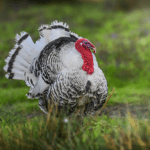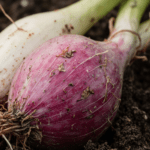Enhancing Your Texas Land for a Successful Turkey Season
Turkey hunting in Texas isn’t just a sport—it’s a rich tradition deeply rooted in the state’s vast ranch lands and rugged outdoor spirit. Whether you’re a Texas rancher, a dedicated hunter, or a landowner passionate about wildlife, your role in fostering a thriving turkey population is crucial, especially as urban sprawl and habitat loss challenge these native birds.
Smart Land Management on the Texas Ranch
Managing your Texas property wisely is key to supporting healthy turkey populations. In Texas, where the iconic wild turkey is both a prized game bird and a symbol of rural heritage, thoughtful land management can create a sanctuary that supports robust turkey numbers year after year.
Boosting Habitat Quality in the Lone Star State
Diverse Environments:
Wild turkeys require a mix of environments to meet their needs. On Texas ranches, establishing a variety of habitats—from open meadows to wooded areas—ensures turkeys have ample space for foraging, nesting, and roosting. Creating these mosaic landscapes is essential for a healthy turkey population.
Native Food Sources:
A balanced diet is vital. While commercial food plots are often used on larger ranches, integrating native Texas grasses and forbs provides turkeys with nutritious food all year long. Tailor your plantings to the specific needs of the turkey subspecies common in Texas to support their natural diet and bolster their numbers.
Water Management:
In the warm Texas climate, access to clean water is a lifeline. Ensuring that turkeys have year-round access to water—from natural ponds to strategically placed troughs—is crucial for their survival. Effective water management is a hallmark of successful Texas ranching and plays an essential role in wildlife conservation.
Creating Safe Havens for Texas Turkeys
Nesting and Roosting Sites:
Providing secluded, protected areas for nesting is critical. For Texas turkeys, undisturbed woodlands and designated roosting trees allow hens to raise their poults safely away from disturbance. Leaving parts of your ranch undisturbed during the breeding season can make all the difference.
Predator Management:
Predators pose a significant threat, particularly during nesting. Texas ranchers often use a combination of controlled trapping, hunting, and strategic fencing to manage predator populations around key turkey habitats. Establishing safe zones through fencing can protect nesting areas and reduce the risk of predation.
Maintaining Healthy Texas Forests and Open Lands
Forest and Land Maintenance:
Healthy forests are a cornerstone of successful turkey habitat. On Texas properties, managing a mix of forested areas and open spaces provides turkeys with both shelter and foraging grounds. Thoughtful timber management—such as selective thinning and prescribed burns—opens up the canopy, encouraging the growth of a diverse understory that benefits turkeys.
Thinning and Controlled Burns:
Timber thinning helps reduce overcrowding in dense forests, promoting a healthier mix of plants. Prescribed burns, a common practice among Texas ranchers, mimic natural ecological processes. These burns rejuvenate plant communities, enhance forage quality, and ultimately create a more favorable environment for wild turkeys.
Conservation and Community Collaboration
Soil and Water Conservation:
Sustainable ranch management in Texas includes measures to control erosion and maintain water quality. Establishing buffer zones along waterways and implementing soil conservation practices ensures that your land remains productive and supports a healthy ecosystem for turkeys and other wildlife.
Working Together:
Texas ranchers and landowners often collaborate with local wildlife agencies and conservation groups to share expertise and resources. These partnerships can provide valuable guidance and even financial support for habitat improvement projects, reinforcing the collective effort to sustain Texas’ wild turkey populations.
Final Thoughts
In Texas, preserving and enhancing land for turkey hunting is about more than just the thrill of the hunt—it’s about honoring a long-standing tradition and sustaining a vital part of the state’s natural heritage. With smart land management, diverse habitat creation, and community collaboration, you can transform your Texas property into a thriving refuge for wild turkeys. Embrace these practices to secure a legacy of conservation and to enjoy a rewarding turkey season on your own piece of the Lone Star State.
This article was adapted from this original article by By John Hardin, published on Land Think






